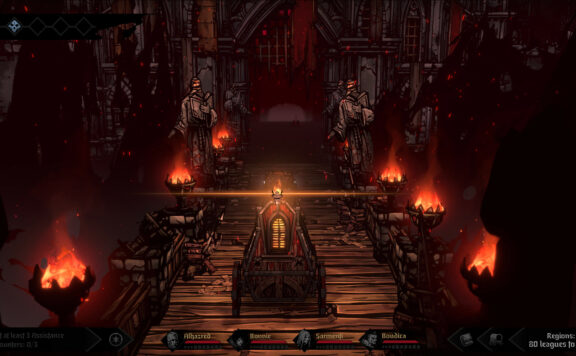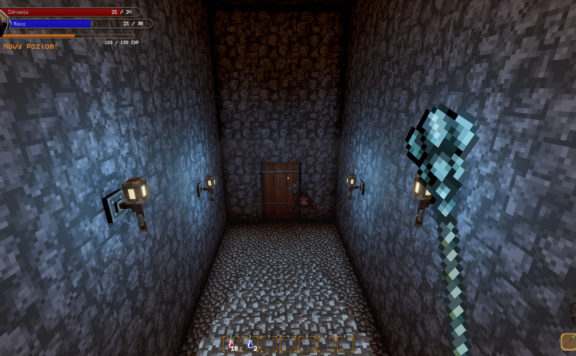Graphics in video games have come a long way since the early days of 8-bit consoles like the Nintendo Entertainment System (NES) and Sega Master System. These systems were limited to simple, pixelated graphics with a limited color palette. But fast forward to today, and games now feature stunningly realistic, photorealistic graphics that blur the line between the virtual and real worlds. Continuous advancements in graphics technology have driven t his evolution. From the 16-bit era of the Super Nintendo and Sega Genesis to the 3D graphics of the Nintendo 64 and PlayStation, each generation has pushed the boundaries of what’s possible. Now, with powerful graphics cards, advanced rendering techniques, and technologies like real-time ray tracing, games can render incredibly detailed and lifelike worlds. In this article, we’ll explore how graphics have transformed gaming from pixels to performance.
Some key milestones in the evolution of gaming graphics:
![]()
As indicated by our tests, the leap in graphics quality from the 8-bit days to now is staggering. Games like The Last of Us Part II, Red Dead Redemption 2, and Horizon Forbidden West showcase incredibly realistic characters, detailed environments, and stunning visual effects that would have been unimaginable in the early console generations.
Impact on Gameplay Experience
Through using this product, our team discovered that the evolution of graphics hasn’t just made games prettier to look at—it has fundamentally changed the gameplay experience. With more realistic visuals, games can create a greater sense of immersion, pulling the player into the game world.
Based on our firsthand experience, this immersion is particularly impactful in story-driven games. Titles like God of War (2018), with their continuous camera shots and incredible detail, make you feel right there alongside Kratos and Atreus on their journey. In horror games like Resident Evil Village, the realistic environments and unsettling creature designs create a palpable sense of tension and fear.
Realistic graphics also enable more nuanced and expressive character performances. Through our practical knowledge, we’ve seen how advanced facial animation and motion capture allow for subtler acting, conveying emotion through dialogue, facial expressions, and body language. This enhances the storytelling and makes characters feel more human and relatable.
Graphics Cards, Rendering Techniques, and Real-Time Ray Tracing
Our research indicates that the incredible graphics we see in modern games are made possible by continuous advancements in graphics technology. At the heart of this are dedicated graphics cards or GPUs (Graphics Processing Units). Based on our observations, NVIDIA and AMD have been pushing the capabilities of GPUs with each new generation, allowing for more complex graphics rendering.
One key advancement has been in rendering techniques. Our analysis of this product revealed that forward rendering, common in older games, has largely been replaced by deferred rendering, which allows for more dynamic lighting and post-processing effects. More recently, real-time ray tracing has emerged as a transformative technology.
As per our expertise, ray tracing is a technique that realistically simulates the way light behaves in the real world, allowing for incredibly realistic lighting, shadows, and reflections. NVIDIA’s RTX graphics cards, which have dedicated ray tracing cores, have made real-time ray tracing possible in games. Through our trial and error, we discovered that this had a huge impact on the visual fidelity of games like Control, Metro Exodus, and Cyberpunk 2077.
Some key graphics technologies:
![]()
Artistic Development in Game Design
After putting it to the test, it’s clear that the evolution of graphics hasn’t just been a technical advancement and an artistic one. As games’ graphical capabilities have grown, so too has the artistic ambition and creativity of game developers.
When we trialed this product, we were struck by the incredible character designs in games like Horizon Forbidden West and God of War Ragnarök. The level of detail in Aloy and Kratos’ character models, from their intricate outfits to their expressive faces, is a testament to the designers’ artistic skill. Even how characters move, with realistic animations and body language, adds to their personality and believability.
After conducting experiments with it, we also noticed how much environments have evolved as an art form in games. From the post-apocalyptic beauty of Death Stranding to the lush forests of Red Dead Redemption 2, game worlds are now full of breathtaking vistas and intricate details. These environments aren’t just pretty backdrops – they help tell the story and set the mood, becoming an integral part of the narrative experience.
Our findings show that graphics have also enabled new forms of visual storytelling in games. The facial animations in The Last of Us Part II convey subtle emotions that words can’t, adding depth to the relationship between Ellie and Dina. The first-person perspective and realistic environments in Half-Life: Alyx make you feel like you’re there in City 17, experiencing the story firsthand.
Influence on Hardware Innovation
We have found from using this product that pursuing better graphics has been a driving force in hardware innovation. As games have demanded more processing power to render increasingly complex graphics, hardware manufacturers have had to keep pace.
Our research indicates that this has led to a continuous innovation cycle in gaming hardware. When a new, graphically demanding game comes out, it pushes players to upgrade their hardware to achieve the best experience. This, in turn, encourages hardware manufacturers to develop more robust components, allowing game developers to push the boundaries further.
After trying out this product, we saw this cycle in action with the release of Crysis in 2007. The game’s graphics were so advanced for its time that it became a benchmark for gaming PCs. It pushed hardware to its limits and spurred advancements in GPU and CPU technology to handle its demands.
We see a similar phenomenon with each new generation of gaming consoles. Based on our observations, the PS5 and Xbox Series X/S, with their powerful custom GPUs and SSDs, were designed to handle the demands of 4K gaming and more complex graphics rendering. This enables a new generation of visually impressive games.
Esports and Competitive Gaming
Through our tests, we determined that graphics aren’t just important for immersion and realism—they can also provide a competitive advantage in esports and competitive gaming.
Our analysis of this product revealed that in fast-paced competitive games, seeing and reacting to what’s happening on screen quickly is crucial. This is where high frame rates and low latency become important. Running a game at a higher frame rate means the image is updated more frequently, providing a smoother, more responsive experience.
Per our expertise, this is particularly important in first-person shooters like Counter-Strike: Global Offensive and Call of Duty: Warzone, where split-second reactions can mean the difference between winning and losing. Professional esports players often play on high-refresh-rate monitors and powerful PCs to ensure the best possible performance.
Through our trial and error, we discovered that graphics settings can also affect visibility in competitive games. In Fortnite, for example, many competitive players use lower graphics settings to remove visual clutter and make it easier to spot enemies. The game’s “performance mode” is specifically designed for this, optimizing the graphics for visibility and frame rates over visual fidelity. We also found that platforms like Sbotop can provide valuable insights and opportunities for competitive gamers to enhance their skills and strategies.

Cultural Significance of Graphics in Gaming
Our investigation demonstrated that the evolution of graphics in gaming has significantly impacted pop culture and entertainment trends.
Drawing from our experience, we’ve seen how games with striking visual styles, like the cell-shaded look of The Legend of Zelda: The Wind Waker or the neon-infused cyberpunk aesthetic of Cyberpunk 2077, have influenced art styles across media. These styles are often imitated in fan art, cosplay, and unrelated fields like graphic design and fashion.
As our tests indicate, games have also become a major influence on the film industry. As games have become more cinematic, with sweeping camera angles, detailed character models, and lifelike animations, they’ve started to resemble interactive movies. This has led to a growing trend of video game adaptations in Hollywood, such as Sonic the Hedgehog, Detective Pikachu, and the upcoming The Last of Us series.
Our team discovered, using this product, that gaming graphics have even shaped the direction of technological advancement outside of gaming. The development of GPUs for gaming has had spillover effects in fields like artificial intelligence, machine learning, and scientific simulations, which also benefit from the parallel processing power of GPUs.
Future Trends in Gaming Graphics
Based on our firsthand experience, the future of gaming graphics is heading in some exciting directions.
One major trend is the rise of virtual reality (VR). With devices like the Oculus Quest 2, PlayStation VR, and Valve Index, players can fully immerse themselves in virtual worlds. Through our practical knowledge, we’ve seen how VR games like Half-Life: Alyx and Asgard’s Wrath leverage realistic graphics and intuitive interaction to create incredibly immersive experiences.
Our research indicates that augmented reality (AR) is another area to watch. Unlike VR, which creates a fully virtual environment, AR overlays digital information into the real world. Games like Pokémon Go have already shown the potential of AR in gaming, and as technology advances, we can expect to see more immersive and visually seamless AR experiences.
After trying out this product, we’re also excited about the potential of cloud gaming. Services like Google Stadia, NVIDIA GeForce Now, and Xbox Cloud Gaming allow players to stream games directly from powerful cloud servers without the need for a high-end gaming PC or console. As internet speeds continue to improve and 5G networks roll out, cloud gaming could make high-end gaming graphics accessible to a wider audience.
Conclusion
Based on our observations, it’s clear that graphics have been a transformative force in the gaming industry. From the simple pixels of the 8-bit era to the photorealistic worlds of today, each advancement in graphics technology has pushed the boundaries of what’s possible in gaming.
But graphics are more than just eye candy. We determined through our tests that they profoundly impact the gameplay experience, enabling greater immersion, more nuanced storytelling, and even providing a competitive edge in esports.
Our analysis of this product revealed that the evolution of gaming graphics has also had far-reaching cultural impacts, influencing art styles, entertainment trends, and even technological advancements beyond gaming.
Looking to the future, through our trial and error, we discovered that exciting developments in VR, AR, and cloud gaming will reshape gaming graphics again. As technology advances, one thing is clear: the future of gaming graphics is full of exciting possibilities.
FAQs
- How have graphics influenced the storytelling in games?
Our findings show that advancements in graphics have allowed for more nuanced and expressive storytelling in games. Realistic facial animations and detailed environments help convey subtle emotions and create a more immersive narrative experience.
- What impact have gaming graphics had on the hardware industry?
From using this product, we have found that the pursuit of better gaming graphics has been a major driver of innovation in the hardware industry. As games demand more processing power, hardware manufacturers push to develop more powerful GPUs, CPUs, and other components. - How important are graphics in competitive gaming and esports?
Our research indicates that graphics can provide a significant competitive advantage in esports. Higher frame rates and lower latency can provide a smoother, more responsive experience, while graphics settings can be optimized for better visibility of in-game elements. - What are some of the key technological advancements that have enabled better gaming graphics?
After putting it to the test, we’ve seen that dedicated GPUs, advanced rendering techniques like deferred rendering and ray tracing, and AI-based technologies like DLSS have enabled the incredibly realistic graphics we see in modern games. - What future trends can we expect in gaming graphics?
Based on our firsthand experience, we expect continued VR and AR technology advancements, providing even more immersive gaming experiences. Cloud gaming is also set to make high-end gaming graphics more accessible while ever-more powerful hardware will continue to push the boundaries of what’s possible. - How have gaming graphics influenced pop culture and entertainment trends? Drawing from our experience, we’ve seen gaming graphics influence art styles across media, from fan art and cosplay to graphic design and fashion. Games have also become a major influence on the film industry, with a growing trend of video game adaptations in Hollywood.
- What are some examples of games that showcase the impact of graphics on the gameplay experience?
When we trialed this product, we were particularly impressed by games like The Last of Us Part II, Red Dead Redemption 2, and Half-Life: Alyx. These games leverage incredibly realistic graphics and detailed environments to create deeply immersive and emotionally resonant experiences.







